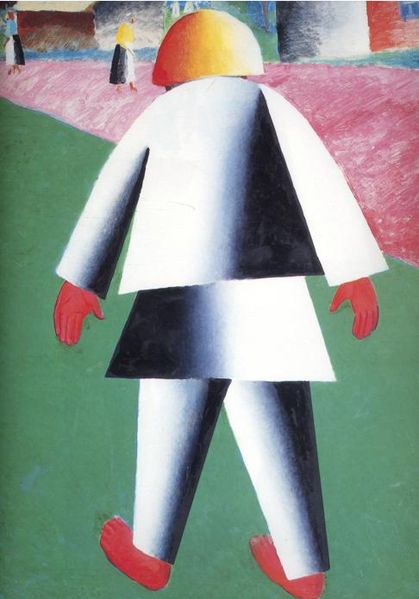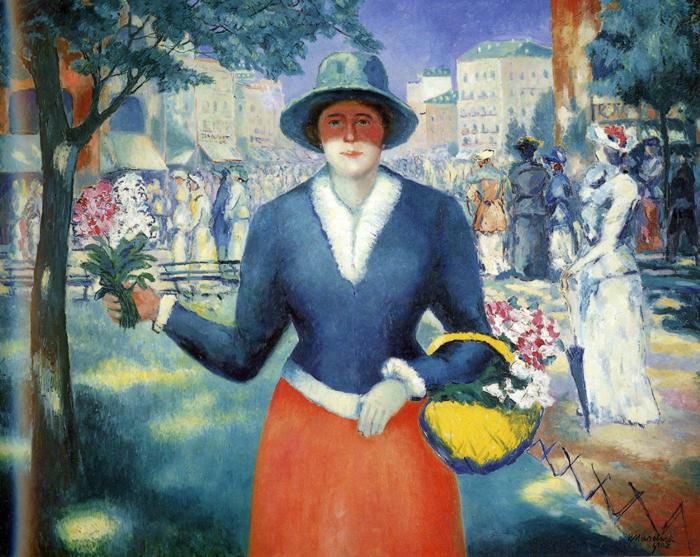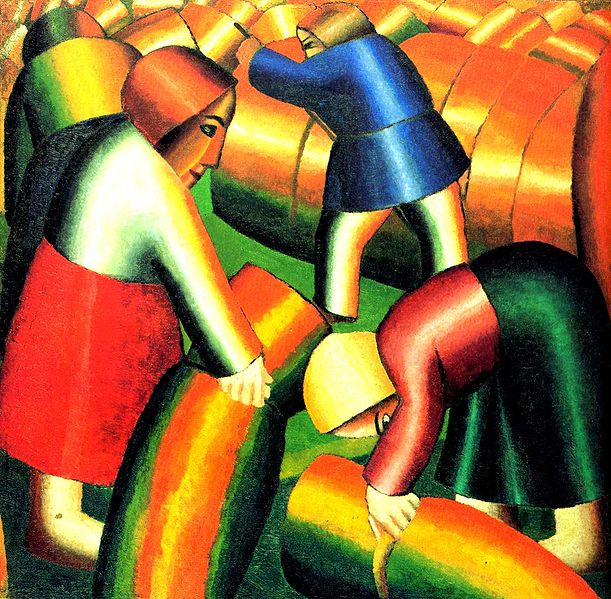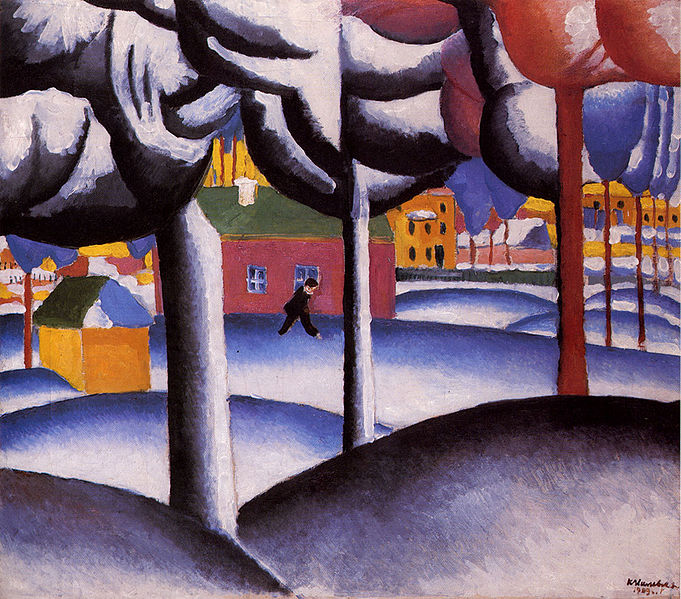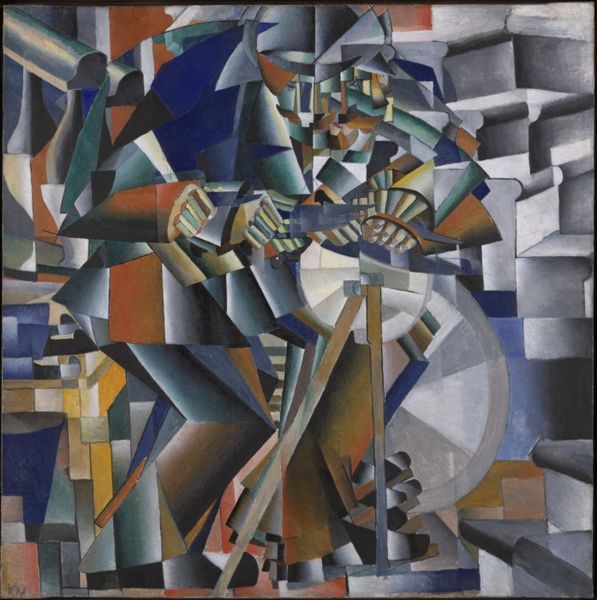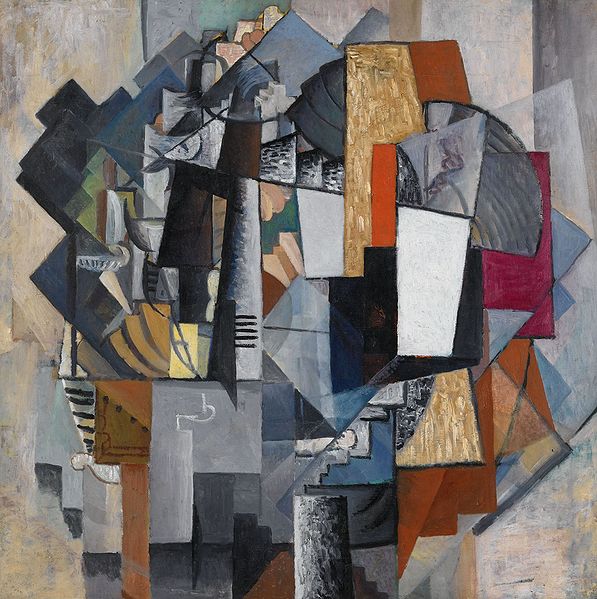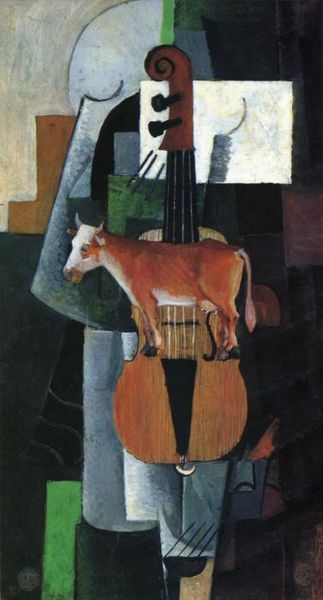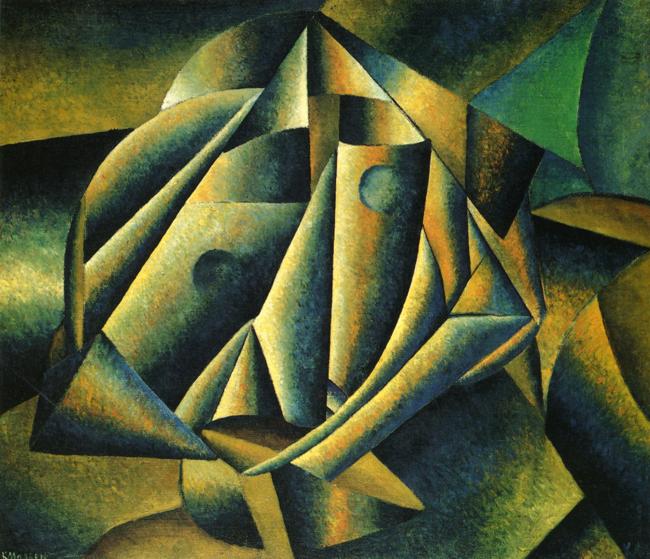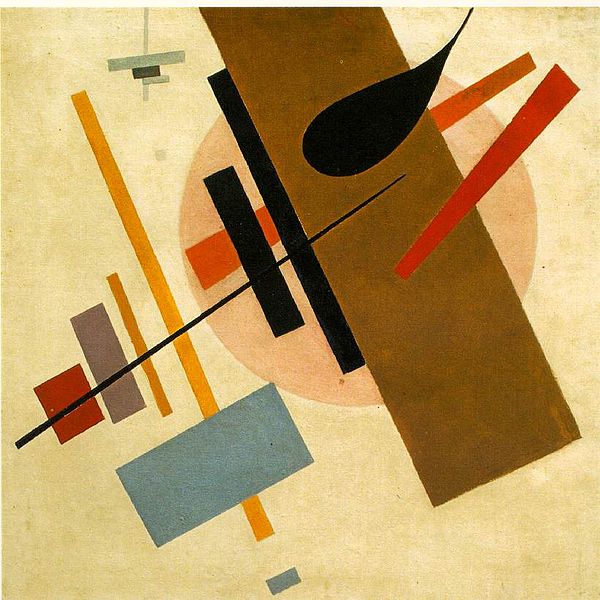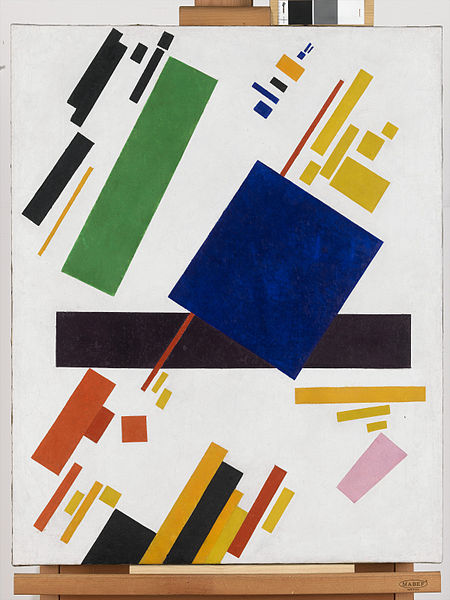<Back to Index>
- Painter Vladimir Davidovich Baranov - Rossine, 1888
- Painter Kazimir Severinovich Malevich, 1879
PAGE SPONSOR
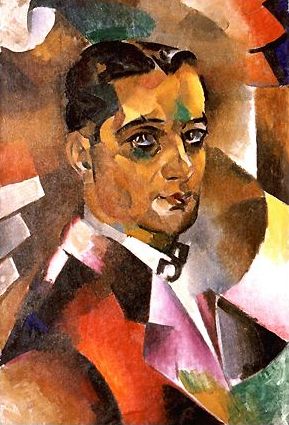
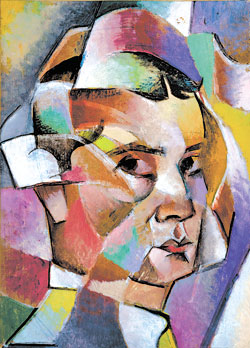
Vladimir Davidovich Baranoff - Rossine (Russian: Владимир Давидович Баранов-Россине) (1888 - 1944) was a Russian - French painter, avant garde artist (cubo - futurist), and inventor.
Vladimir Baranov - Rossine was born in Kherson, Russian Empire, to parents of Jewish ethnicity.
In 1902 he studied at the School of the Society for the Furthering of the Arts in St. Petersburg. From 1903 to 1907 he attended the Imperial Academy of Arts in St. Petersburg.
In 1908 he exhibited with the group Zveno ("The Link") in Kiev organized by the artist David Burliuk and his brother Wladimir Burliuk.
In 1910 he moved to Paris, where until 1914 he was a resident in the artist's colony La Ruche together with Alexander Archipenko, Sonia Delaunay - Terk, Nathan Altman and others. He exhibited regularly in Paris after 1911.
He returned to Russia in 1914. In 1916 he had a solo exhibition in Oslo. In 1918 he had exhibits with the union of artists Mir Iskusstva ("World of Art") in Petrograd (St. Petersburg). In the same year he had an exhibition with the group Jewish Society for the Furthering of the Arts in Moscow, together with Nathan Altman, El Lissitzky and David Shterenberg. He participated at the First State Free Art Exhibition in Petrograd in 1919.
In 1922 Baranov - Rossine was the teacher at the Higher Artistic - Technical Workshops (VKhUTEMAS) in Moscow.
In 1924 he had the first presentation of his optophonic piano during a performance at the Bolshoi Theater in Moscow - a synaesthetic instrument that was capable of creating sounds and colored lights, patterns and textures simultaneously.
In 1925 he emigrated to France.
Continuously experimenting, Baranov - Rossine applied the art of color to military art with the technique of camouflage or the Cameleon process and this was marketed with Robert Delaunay. Baranov - Rossine is credited as an author of pointillist or dynamic military camouflage. He also invented a "photochromometer" that allowed the determination of the qualities of precious stones. In another field, he perfected a machine that made, sterilized and distributed fizzy drinks, the "MULTIPERCO", and this received several technical awards at the time.
During the German occupation Baranov
- Rossine, being of Jewish origin, was
deported to a German concentration camp and died
there.
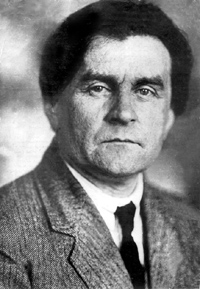
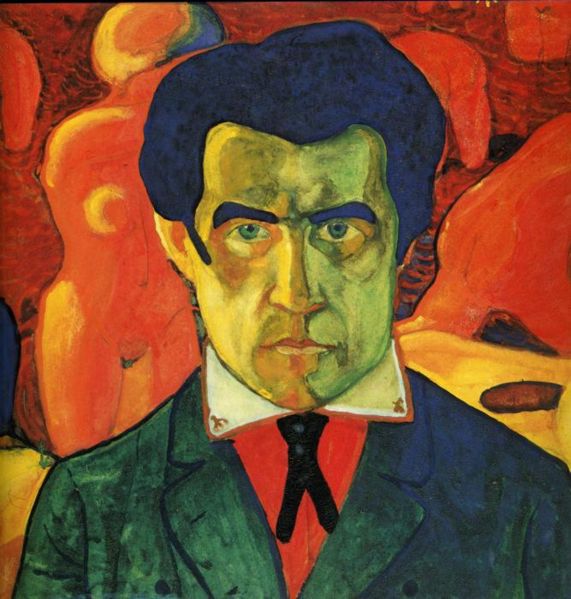
Kazimir Severinovich Malevich (Russian: Казимир Северинович Малевич, Polish: Kazimierz Malewicz, Ukrainian:Казимир Северинович Малевич, German:Kasimir Malewitsch), (February 23, 1879, previously 1878: see below - May 15, 1935) was a Russian painter and art theoretician, born of ethnic Polish parents. He was a pioneer of geometric abstract art and the originator of the avant garde Suprematist movement.
Kazimir Malevich was born near Kiev in the Kiev Governorate of the Russian Empire (today Ukraine). His parents, Seweryn and Ludwika Malewicz, were ethnic Poles, and he was baptized in the Roman Catholic Church. His father managed a sugar factory. Kazimir was the first of 14 children, only nine of which survived into adulthood. His family moved often and he spent most of his childhood in the villages of Ukraine amidst sugar beet plantations, far from centers of culture. Until age 12 he knew nothing of professional artists, though art had surrounded him in childhood. He delighted in peasant embroidery, and in decorated walls and stoves. He himself was able to paint in the peasant style. He studied drawing in Kiev from 1895 to 1896.
Recently Ukrainian art historians established the precise birthdate of the artist: February 23, 1879. Professor D. Gorbachev, in his 2006 book Malevich and Ukraine, (published in Kiev) reveals many new biographical details. French art historian Andrei Nakov re-established Malevich's birth year as 1879 (and not 1878), and argues for restoration of the Polish spelling of his name.
From 1896 to 1904 Kazimir Malevich lived in Kursk. In 1904, after the death of his father, he moved to Moscow. He studied at the Moscow School of Painting, Sculpture and Architecture from 1904 to 1910 and in the studio of Fedor Rerberg in Moscow (1904 to 1910). In 1911 he participated in the second exhibition of the group Soyuz Molodyozhi (Union of Youth) in St. Petersburg, together with Vladimir Tatlin and, in 1912, the group held its third exhibition, which included works by Aleksandra Ekster, Tatlin and others. In the same year he participated in an exhibition by the collective Donkey's Tail in Moscow. By that time his works were influenced by Natalia Goncharova and Mikhail Larionov, Russian avant garde painters who were particularly interested in Russian folk art called lubok. In March 1913 a major exhibition of Aristarkh Lentulov's paintings opened in Moscow. The effect of this exhibition was comparable with that of Paul Cézanne in Paris in 1907, as all the main Russian avant garde artists of the time (including Malevich) immediately absorbed the cubist principles and began using them in their works. Already in the same year the Cubo - Futurist opera Victory Over the Sun with Malevich's stage set became a great success. In 1914 Malevich exhibited his works in the Salon des Independants in Paris together with Alexander Archipenko, Sonia Delaunay, Aleksandra Ekster and Vadim Meller, among others.
In 1915, Malevich laid down the foundations of Suprematism when he published his manifesto From Cubism to Suprematism. In 1915 - 1916 he worked with other suprematist artists in a peasant / artisan co-operative in Skoptsi and Verbovka village. In 1916 - 1917 he participated in exhibitions of the Jack of Diamonds group in Moscow together with Nathan Altman, David Burliuk and A. Ekster, among others. Famous examples of his suprematist works include Black Square (1915) and White on White (1918).
In 1918, Malevich decorated a play, Mystery Bouffe, by Vladimir Mayakovskiy produced by Vsevolod Meyerhold.
He was also interested in aerial photography and aviation, which led him to abstractions inspired by or derived from aerial landscapes. As Professor Julia Bekman Chadaga wrote:
Some Ukrainian authors claim that Malevich's Suprematism is rooted in the traditional Ukrainian culture.In his later writings, Malevich defined the "additional element" as the quality of any new visual environment bringing about a change in perception... In a series of diagrams illustrating the "environments" that influence various painterly styles, the Suprematist is associated with a series of aerial views rendering the familiar landscape into an abstraction...
After the October Revolution, Malevich became a member of the Collegium on the Arts of Narkompros, the Commission for the Protection of Monuments and the Museums Commission (all from 1918 - 1919). He taught at the Vitebsk Practical Art School in the USSR (now part of Belarus) (1919 - 1922), the Leningrad Academy of Arts (1922 - 1927), the Kiev State Art Institute (1927 - 1929), and the House of the Arts in Leningrad (1930). He wrote the book The World as Non-Objectivity published in Munich 1926, only translated into English in 1959. In it he outlines his suprematist theories.
In 1923,
Malevich was appointed director of Petrograd State
Institute of Artistic Culture, which was forced to close
in 1926 after a Communist party newspaper called it "a
government - supported monastery" rife with "counter -
revolutionary sermonizing and artistic debauchery." The
Soviet state was by then heavily promoting a politically
sustainable style of art called Social Realism — a style
Malevich had spent his entire career repudiating.
Nevertheless, he swam with the current, and was quietly
tolerated by the Communists.
In 1927, he traveled to Warsaw and then to Berlin and Munich for a retrospective which finally brought him international recognition. He arranged to leave most of the paintings behind when he returned to the Soviet Union. Malevich's assumption that a shifting in the attitudes of the Soviet authorities towards the modernist art movement would take place after the death of Lenin and Trotsky's fall from power, was proven correct in a couple of years, when the Stalinist regime turned against forms of abstraction, considering them a type of "bourgeois" art, that could not express social realities. As a consequence, many of his works were confiscated and he was banned from creating and exhibiting similar art.
Critics derided Malevich for reaching art by negating everything good and pure: love of life and love of nature. The Westernizer artist and art historian Alexandre Benois was one such critic. Malevich responded that art can advance and develop for art's sake alone, regardless of its pleasure saying that "art does not need us, and it never did".
Malevich's work only recently reappeared in art exhibitions in Russia after a long absence. Since then art followers have labored to reintroduce the artist to Russian lovers of painting. A book of his theoretical works with an anthology of reminiscences and writings has been published.
Malevich died of cancer in
Leningrad on May 15, 1935. On his deathbed he was
exhibited with the black square above him, and mourners
at his funeral rally were permitted to wave a banner
bearing a black square. His ashes were
sent to Nemchinovka, and buried in a field near his dacha. A white cube decorated with a black
square was placed on his tomb. The city of Leningrad
bestowed a pension on Malevich's mother and daughter.
"No phenomenon is mortal," Malevich wrote in an
unpublished manuscript, "and this means not only the
body but the idea as well, a symbol that one is
eternally reincarnated in another form which actually
exists in the conscious and unconscious person."
Black Square, the fourth version of his magnum opus painted in the 1920s was discovered in 1993 in Samara and purchased by Inkombank for $250,000. In April 2002 the painting was auctioned for an equivalent of one million dollars. The purchase was financed by the Russian philanthropist Vladimir Potanin, who donated funds to Russian Ministry of Culture and ultimately to State Hermitage Museum collection. According to the Hermitage website, this was the largest private contribution to state art museums since the October Revolution.
On November 3, 2008 a work by Malevich entitled Suprematist Composition from 1916 set the world record for any Russian work of art and any work sold at auction for that year, selling at Sotheby’s in New York City for just over $60 million U.S. (far surpassing his previous record of $17 million set in 2000).
He was awarded the highest category "1A - a world famous artist" in "United Art Rating".
Malevich life inspires many references featuring events and the paintings themselves as players. The smuggling of Malevich paintings out of Russia is a key to the plot line of writer Martin Cruz Smith's thriller Red Square. Noah Charney's novel, The Art Thief tells the story of two stolen Malevich White on White paintings, and discusses the implications of Malevich's radical suprematist compositions on the art world. British artist Keith Coventry has used Malevich's paintings to make comments on modernism, in particular his Estate Paintings. Malevich's work is also featured prominently in the Lars Von Trier film Melancholia.
